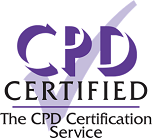Safeguarding Children Level 3
Safeguarding Level 3 for Children is one of our most in depth courses and is designed for managers/practitioners who frequently come into contact with children and their families. This online course outlines the core responsibilities of lead workers as well as why safeguarding is important, serious case reviews, key terms, reducing the likelihood of abuse, signs and symptoms of abuse, what to do if you suspect abuse, and the importance of whistleblowing.
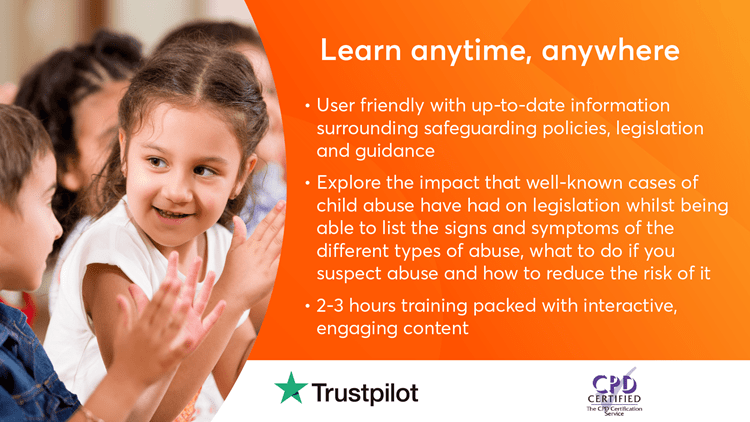
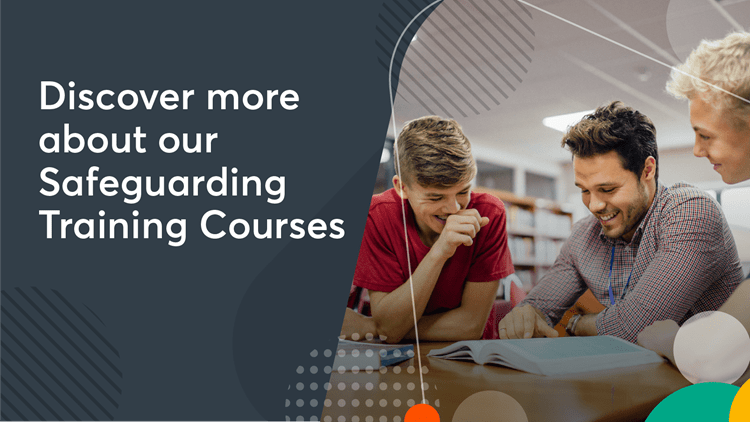
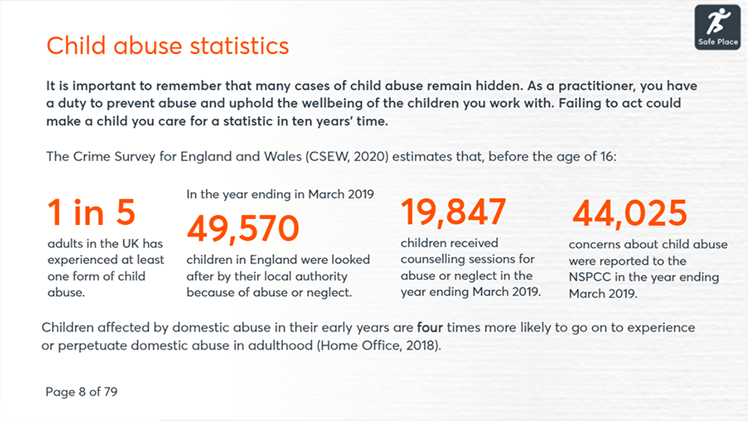
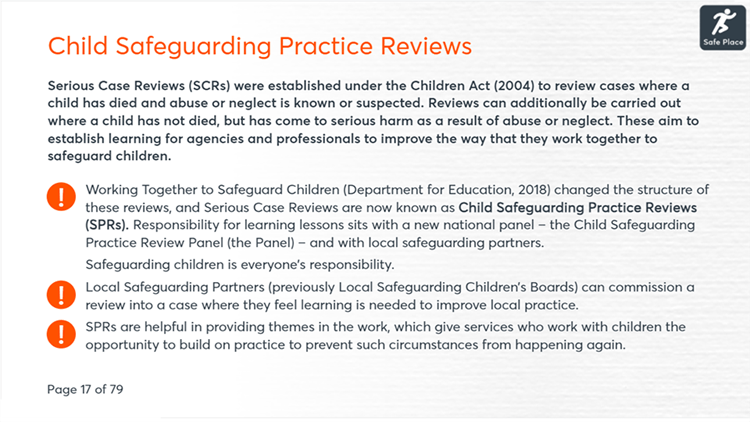
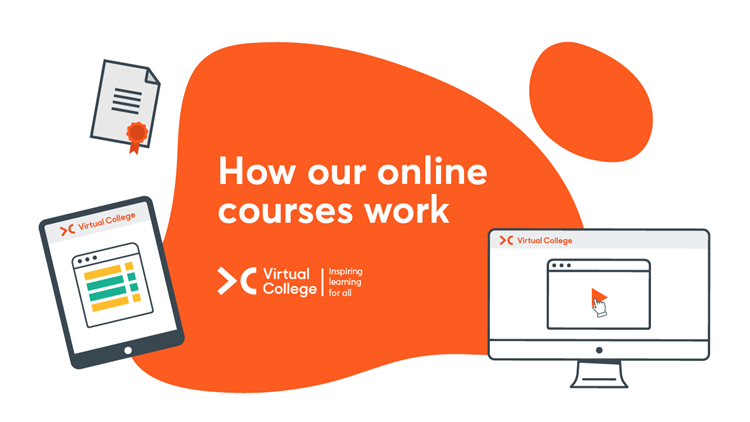



Course Overview
Format
- Level 3
- 2-3 Study Hours
- Online Study
- Self-Printed Certificate
Accreditation
- 3 CPD Points
- CPD Certified
Course description
Anyone who requires Level 3 Safeguarding Training has a considerable responsibility for safeguarding children and they have to be able to act accordingly to information and concerns brought to them.
Anyone working at this level needs to be confident in working with multiple agencies and advise on local and national policies.
We also offer Safeguarding Children Training at Level 2
Unsure if you require Level 2 or 3 Safeguarding Children training? Check out our short guide to find the course that best matches your needs and requirements here.
This Safeguarding Children Level 3 course has been updated to be compliant with new Keeping Children Safe in Education 2022 legislation and how this applies in the workplace or when working with children and young people.
Level 3 training is suitable for anyone who holds a management position and frequently works with children, or anyone who has a designated child protection role. These positions could be in schools, hospitals, sports clubs where safeguarding level 3 training is particularly useful and beneficial.
What does this Level 3 Safeguarding Children training course cover?
The aim of this level 3 safeguarding training is to develop an understanding of safeguarding children, making sure you have up-to-date knowledge of safeguarding policies, legislation and guidance, and how you can reduce the risk of abuse.
| Module | What it includes |
| The Key Principles of Safeguarding | Children's Safeguarding is underpinned by 4 key principles that we delve into to give you the best understanding and awareness. |
| What is Abuse? | You will learn about the different categories of abuse, what abuse actually is and how it can be recognised. This will help make you aware of the indicators of abuse to look out for. |
| Safeguarding Legislation | This section explores the different legislation in place in which the welfare of the child is paramount. We look at The Children Act 1989, The Children and Social Work Act 2017 as well as The UN Convention on the Rights of the Child and more. |
| What is Professional Curiosity? | You'll learn what professional curiosity, disguised compliance and culturally competent curiosity mean and how it can help. We also look at the barriers faced. |
| Barriers to Reporting Abuse | We explain the barriers you may face when raising concerns and how to respond to a child's disclosure of abuse including the interpersonal skills that help, questioning techniques, confidentiality and consent and what to do if consent is refused. |
| Referrals and Concerns: The Process | This section shows you the sequence of referrals. We explain the importance of taking your concerns seriously. We also explore what happens next after a referral is made. We also look at effective record keeping. |
| Writing Court Reports and Giving Evidence | As this is a very serious task for any social worker, we give you the tools you need to write the most effective court reports. We also explore each stage of care proceedings and the outcomes as well as preparing for and giving evidence in court. |
| Risk Assessments and Case Studies | We explain the importance of risk assessments and provide case studies for you to read, now that you have further understanding of the processes. We show you how to evaluate risks and agree safety measures. |
Why take this Level 3 Safeguarding course?
Level 3 safeguarding children training is one of our most in depth safeguarding courses available and has been designed for managers/practitioners working in roles where they frequently come into contact with children and their families. This safeguarding training level 3 course contains core safeguarding modules to ensure that learners are up to date with the latest information and then goes onto more detailed information about reporting suspecting abuse whether it has been reported directly to them or via a member of staff.
The depth of this safeguarding level 3 course allows learners to understand how key safeguarding cases have shaped legislation and how that will impact on them as managers/practitioners and their workplace.
This safeguarding level 3 course covers key topics to ensure learners have a strong grasp on current safeguarding knowledge and key procedures.
To help professionals apply knowledge into everyday life, this safeguarding children level 3 course uses immersive real-world scenarios which can help learners to better understand the importance of certain topics. On completion of this safeguarding training level 3 course learners will be able to:
- Apply the changes to practice made over the past three years to your work
- Identify different levels of harm and follow the appropriate safeguarding procedures
- Collect safeguarding children information from both a local and national context
Our Safeguarding Children Level 3 training is underpinned by the principles of:
- Working together to safeguard children
- Keeping children safe in education
You will learn
- Explain the profound impact some well-known cases of child abuse have had on legislation
- Explain the importance of multi-agency cooperation
- Define safeguarding in respect of children and young people
- Describe what you need to do if a child makes a disclosure or if you suspect abuse
- Explain what whistleblowing is, what it is not, and why it is important
- List the ways you can reduce the risk of abuse
- List the signs and symptoms of the different kinds of abuse
- Outline the responsibilities lead workers in the children’s and young person’s sector have
Who is it for?
Roles including:
- Teachers
- Childminders
- Doctors
- Nurses
- Social workers
- Sports teacher/coaches
- Care workers
- Police
- Paramedics
- Council workers
- Practitioners
Safeguarding Children Level 3 FAQs
-
How long is a Safeguarding Everyone Level 3 valid for?
While Safeguarding Everyone Level 3 does not technically run out, it is best practice to renew it every three years. However Virtual College are constantly updating our courses to keep up to date with safeguarding policies, legislation and guidance therefore some organisations encourage retaking each year.
-
How often do you update the Safeguarding Everyone Level 3?
As safeguarding is such an important subject, we know how vital it is to keep up to date with the relevant policies, legislation and guidance. Therefore, we review and update this course each year, but if there is a major change that needs to be addressed sooner, we will update the course at that point.
See courses here.
-
Which level of Safeguarding Everyone training do I need Level 1, 2, 3 or 4?
Whilst safeguarding training is a requirement for all those working with children, young people and adults at risk, depending on the sector you work in and your job role, you will have different responsibilities for safeguarding. Safeguarding training is categorised into Levels 1, 2, 3, 4 and above. Whatever your role, everyone should know where and how to report any concern about abuse of an adult or child at risk of harm.
Level 1 The minimum level of training required if you work or volunteer in a role where you are in close contact with children or adults at risk.
Level 2 If you have extra responsibilities for safeguarding, you may need to undertake further training, in order to enable you to undertake your role fully.
Level 3 If you have direct responsibility for safeguarding in your setting, for example if you are the safeguarding lead for your area, you will need training at Level 3 and above.
Level 4 At this moment in time, Virtual College is unable to offer training at this level and above, however, we have developed a variety of resources we hope you will find useful.
More information can be found here.
-
Is Level 3 safeguarding the same as DSL?
Level 3 safeguarding training is designed for the people with a heavily active role in safeguarding in a workplace and has a role in the safeguarding policies, which might include the Designated Safeguarding Officer/Lead (DSL).
-
What does Level 3 safeguarding mean?
Undertaking Level 3 safeguarding training implies that the individual has an extremely active role in any safeguarding situation and requires the knowledge to help shape the safeguarding policies of their workplace.
See more here.
-
What qualifications do you need to be a safeguarding officer?
In order to be a designated safeguarding officer, you must usually have a higher level of safeguarding training than the rest of the staff at your organisation. Virtual College offers ‘Safeguarding Children Level 3’ which is suitable for anyone who is actively involved in the safeguarding processes of wherever they work.
You will need to ensure that everyone else in your organisation who works with children has also completed relevant safeguarding training and that this training and your own is refreshed every two years. As a safeguarding officer, you will also need to have an up-to-date DBS qualification that ensures that you are safe to work with children.
See more here.
How the online courses work
-
Find a course
To begin searching for your online training you can click on the course category section on our website and browse through all of our training categories.
Alternatively if you already know the title of the training you’re looking for you can use the search bar located in the centre of the homepage and go directly to the course you want.
-
Buy the course
When buying one of our courses, you will need to enter a valid email address which will be used to create your account with our Learning Management System – Enable – where you will take the training. We will also send your purchase receipt to this email address, and any additional courses purchased in future using the same email address will be added to your system account.
Once you have purchased a course, you will be able to send this course to other people using your system account with Enable by entering the new learner’s email address so that they may access the training and set up their own system account with our Learning Management System.
If you are not 100% satisfied with your course then we offer a 30-day, no hassle money-back guarantee. To request a refund, you should email our learner support team with your receipt stating why you would like to be reimbursed. You, or your learners, must not have completed the training in order to make a valid refund claim. Any claim made after the training has been completed will be invalidated.
-
Take the course
This online course consists of a series of pages in which an instructor will talk learners through the lesson material. Pages may include supporting pictures, graphs, animation or extra sounds to help with the learning where appropriate. Some lessons will include challenges/quizzes to help learners stay engaged and interested in the material. Lessons can be taken in any order and each lesson may be paused and resumed at any stage.
The course is self-paced so learners decide how fast or slow the training goes. There is no deadline for completion but some of our courses have a test at the end to check that learners have understood the material. If the course has a test at the end then learners are required to achieve a 75% pass mark to successfully complete the course. Once learners have passed the test they are awarded a certificate, which can either be downloaded digitally or sent as a physical copy if this option was chosen when purchasing the course.
-
Your Certificate
Upon completion of any of our courses, learners will be able to download a digital certificate from Virtual College and will include the accrediting bodies logo where applicable.
If you have bought the posted certificate option (available on select courses), a high quality, seal embossed, certificate will be sent out at the beginning of the following working week.



/safer-recruitment.jpg?mw=320&hash=A2BB5E144C89C295EC10C63680F69F39C4C3E566)
